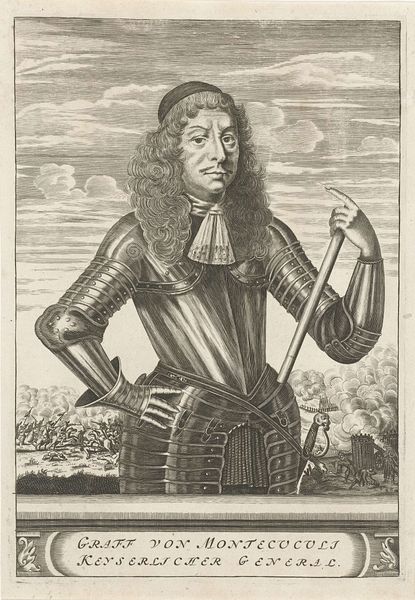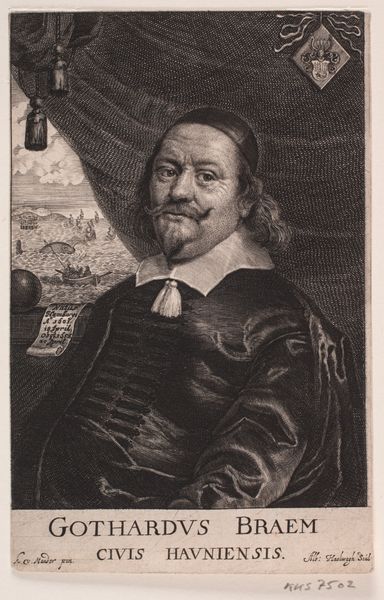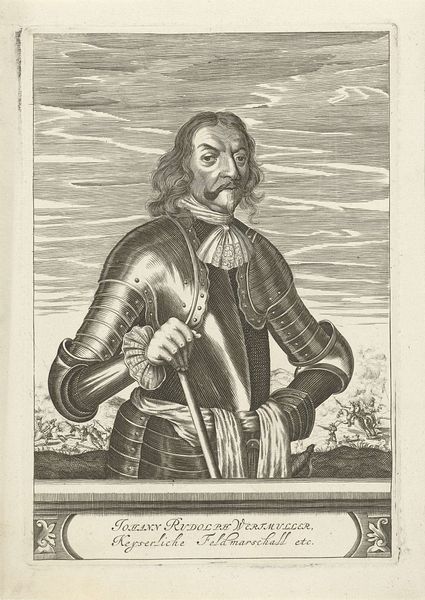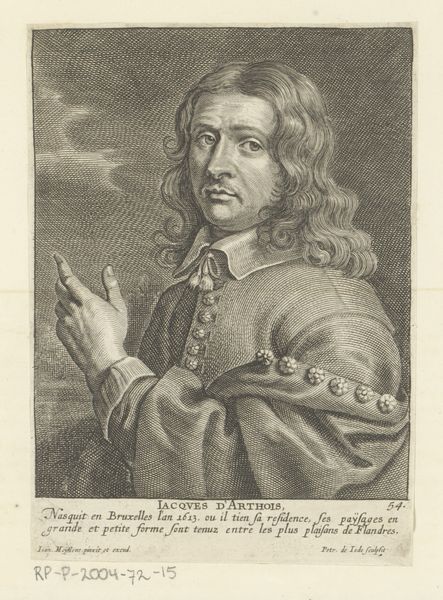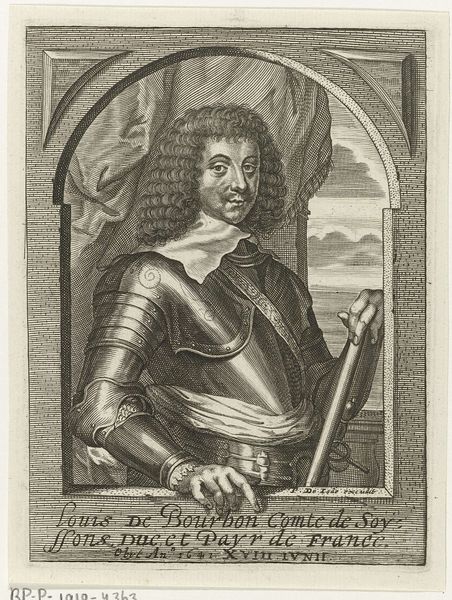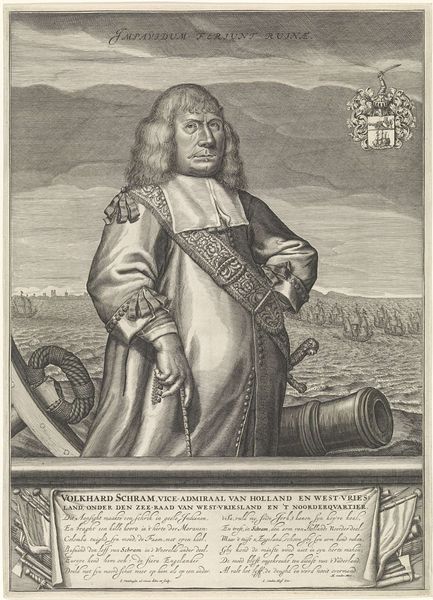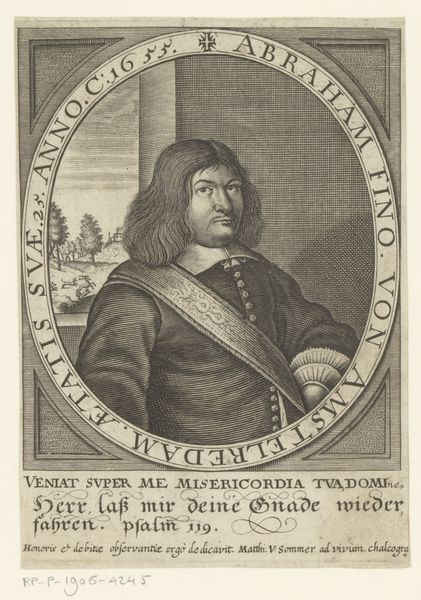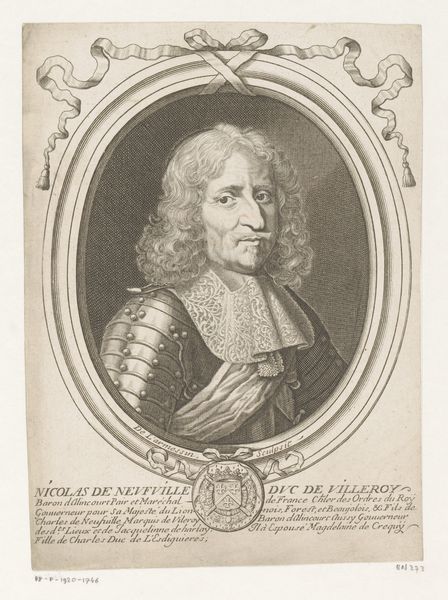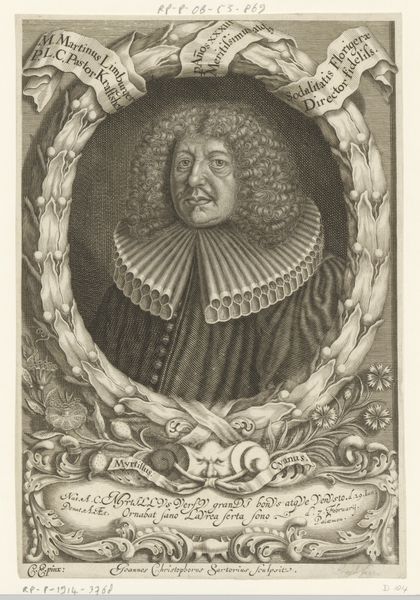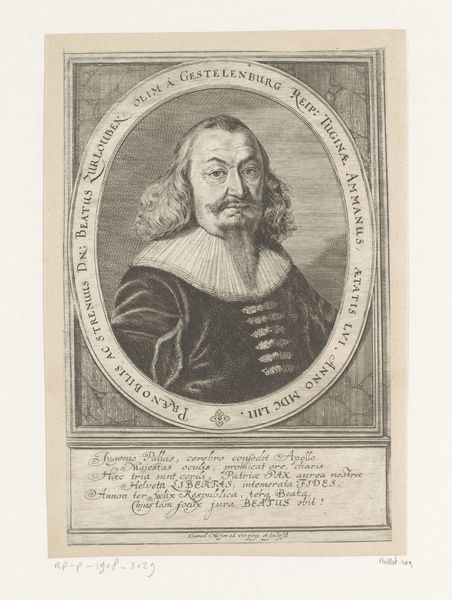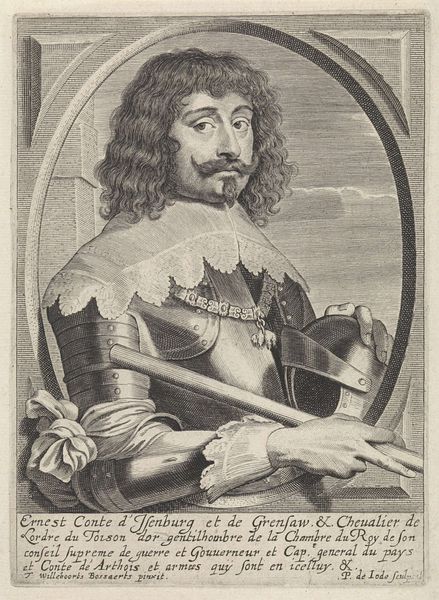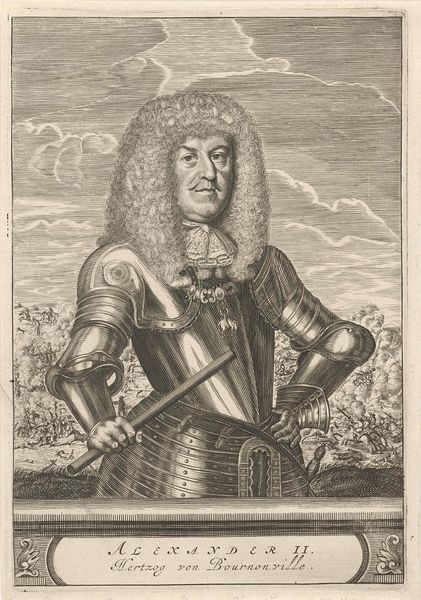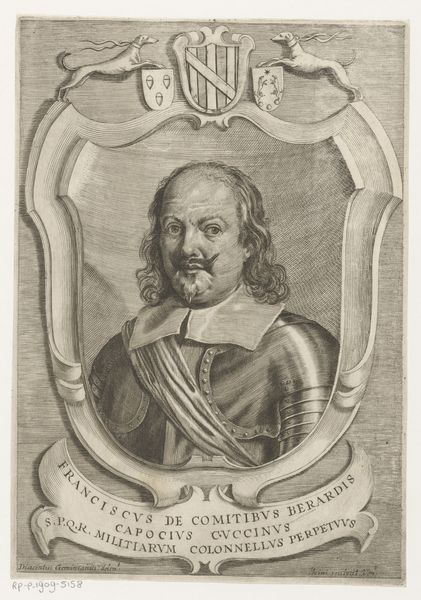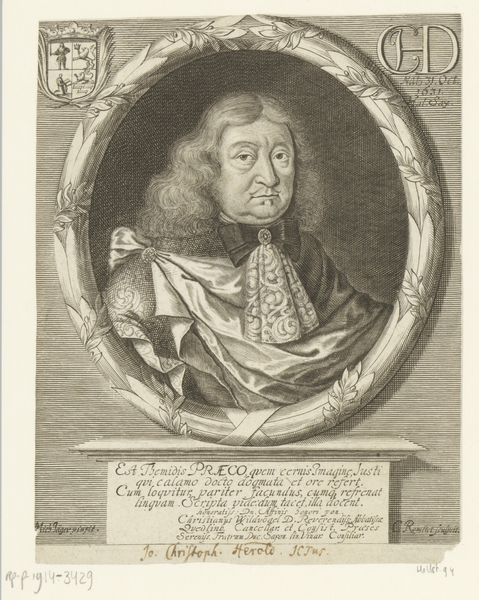
Portret van Frederik Willem, keurvorst van Brandenburg c. 1635 - 1695
0:00
0:00
christiaanhagen
Rijksmuseum
engraving
#
portrait
#
baroque
#
old engraving style
#
history-painting
#
engraving
#
realism
Dimensions: height 197 mm, width 156 mm
Copyright: Rijks Museum: Open Domain
Curator: The first thing that strikes me is the commanding presence – the weight of history etched on his face. Editor: It’s undeniable, but also fascinating to consider this presence as it's rendered through the materiality of the print itself: etched lines, the very labour of its creation contributing to that feeling of gravity. Curator: Indeed. Let's contextualize. This is "Portret van Frederik Willem, keurvorst van Brandenburg", dating approximately from 1635 to 1695. A significant piece from a pivotal period. Consider the symbolic weight of representation, the projection of power. What narratives does this perpetuate? Editor: It's rendered as an engraving, a reproductive medium. Who was the audience? The relatively wide distribution indicates its purpose was as much about making this figure visible, accessible, not simply venerating an elite. Also the armour: mass-produced, distributed, consumed. What does this mass reproduction of leader/armour mean? Curator: Good points. Looking at the scene in the background, we glimpse soldiers, the tools of warfare… an active political and military landscape. It raises questions about the intersections of power, privilege, and militarism, specifically during the 17th century. How do gender roles get reinforced in such images, placing men as leaders, while erasing the contributions of women and other marginalized groups? Editor: Right, the image presents not just Frederick William, but also technologies of the time and their consumption. We should consider the labor involved: the making of paper, the fashioning of the armor, even the grinding of the pigments. It reframes the subject as an individual node within an entire economic and production network. Curator: Absolutely. Seeing this work today urges a re-evaluation of its historical narratives. The legacies of power embodied, or even re-packaged, through images. This demands intersectional readings, challenging simple attributions of greatness. Editor: Precisely. It prompts consideration of how the making and material presence influence our reception. Appreciating art as labour helps see art's true power, the conditions in which art exists as social and political meaning, today.
Comments
No comments
Be the first to comment and join the conversation on the ultimate creative platform.
